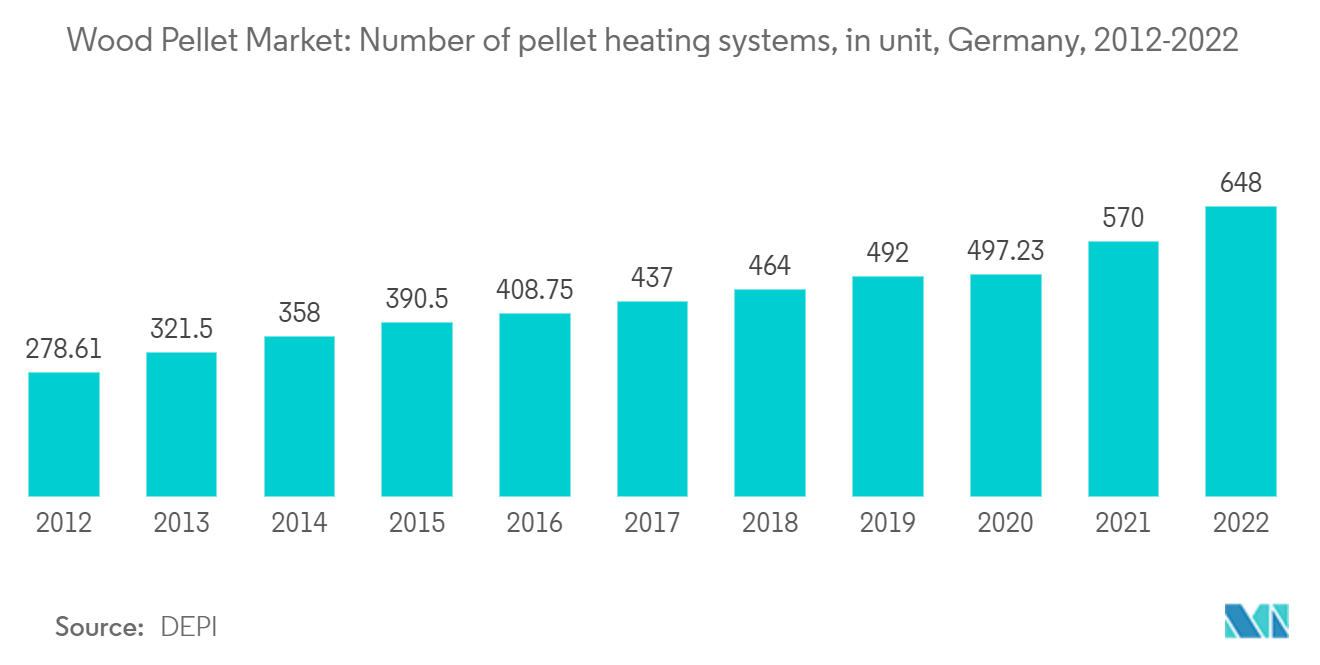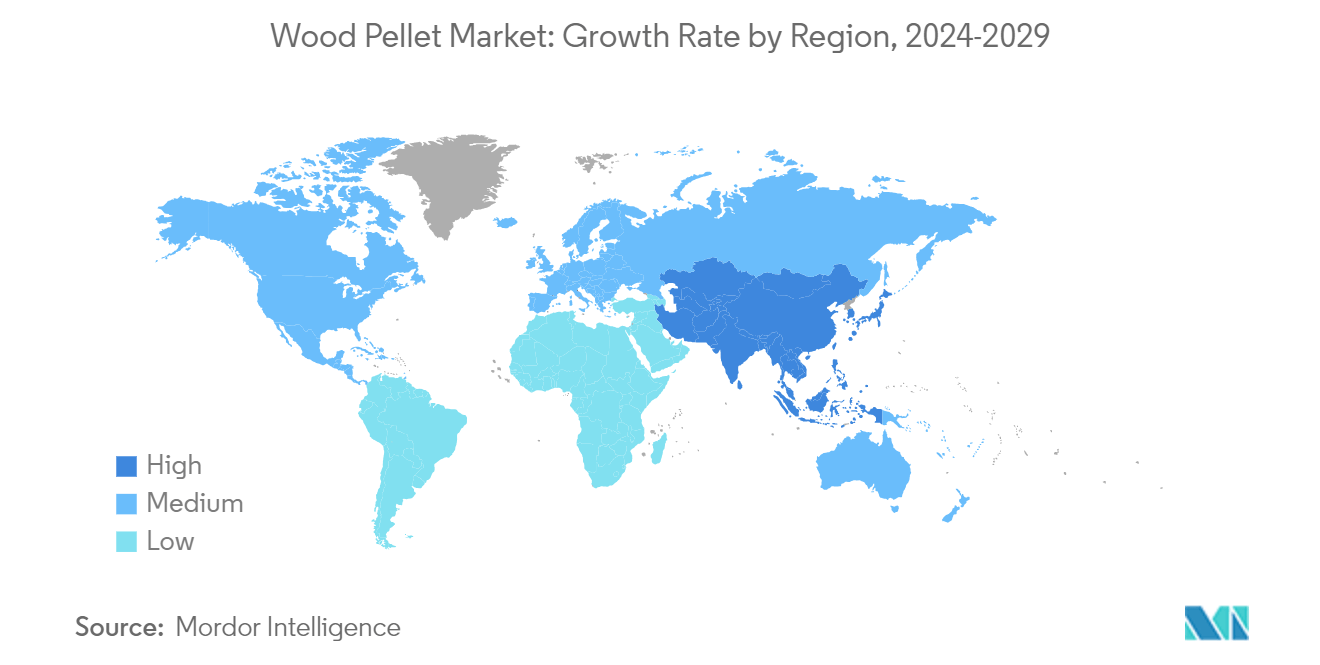Market Trends of Wood Pellet Industry
Heating Application Expected to Dominate the Market
- Pellets are a solid biomass fuel, primarily produced from wood residues and agricultural by-products like straw. Specific advantages of pellets as compared to unprocessed biomass include standardized properties, high energy content, and high density.
- Wood pellets for heating applications are primarily used in residential and commercial sectors for food, cooking and grilling, and supplying heat to homes. Since the cost of shots remained cheaper than other fuels for a long time, it has become a more economical option, addressing the primary concern of the residential and commercial sectors.
- When burned, utility wood pellets (wood pellets) are a densified biomass fuel that can create power or heat. Wood pellet production, consumption, and commerce significantly increased in a few nations during the late 2000s. Industrial power plants, where wood pellets are usually co-fired with or replaced by coal, are the source of consumption growth.
- According to the German Energy Wood and Pellet Association, in 2022, there were 648 thousand pellet heating systems in Germany, an increase compared to 570 thousand in 2021.
- Moreover, as a renewable energy source, wood pellets have received subsidies and incentives from governments in many countries, and many countries either launched or updated their policies and schemes related to wood pellets for heating applications in recent years.
- The UK government has implemented a suspension of fuel quality for pellets exclusively, which went into effect on November 23, 2022, for up to one year. This means that while the rest is in effect, the fuel quality criteria for wood pellets used in biomass boilers and plants where the owner receives Renewable Heat Incentive payments from OFGEM are not required. The government revised regulations in February 2022 to require that any wood fuel having a Biomass Suppliers List (BSL) number also meet the relevant quality criteria.
- Therefore, owing to the above points, the heating application is expected to dominate the wood pellet during the forecast period.

Europe to Dominate the Market
- Europe's demand for wood pellets is expected to increase by 30-40% between 2022 and 2028. Europe represents more than 50% of global pellet demand. Moreover, pellets have also made their way into coal conversion projects in local authority or public administration buildings such as schools and offices.
- According to the USDA Foreign Agricultural Service Report, in 2022, the EU's pellet consumption reached 24.8 million tonnes, up 1.2% from the previous year. The household and commercial sectors consumed around 66% of European pellets, while the industry consumed 34%. The situation varies from one country to the next. The main driver for the Netherlands and Denmark is industrial use (for electricity and CHP). Residential heating accounts for most wood pellet use in Italy, Germany, and France.
- Most countries in the region plan to close or convert co-firing power stations, with several moving to 100% wood pellets for fuel. For instance, in May 2023, Valmet announced the convert Helen Ltd's coal-fired district heat boiler and bubbling fluidized bed (BFB) combustion to enable wood pellet firing at the Salmisaari 'A' power plant in Helsinki, Finland. The conversion promotes the company's goal of phasing out coal and simultaneously strengthens the construction of a sustainable energy system.
- On the other hand, in July 2022, the European Union banned importing Russian woody biomass used to generate energy in response to the war in Ukraine. According to reports, the EU has imported wood pellets from the United States and Eastern Europe to replace the Russian woody biomass supply. Enviva has increased EU shipments since the war began and announced a 10-year contract with an unnamed European customer to provide 800,000 metric tons of pellets yearly by 2027.
- Further, technological advancements in the market in the region are also likely to increase the demand for wood pellets during the studied period.
- Hence, owing to the above points, Europe is expected to dominate the market during the forecast period.


